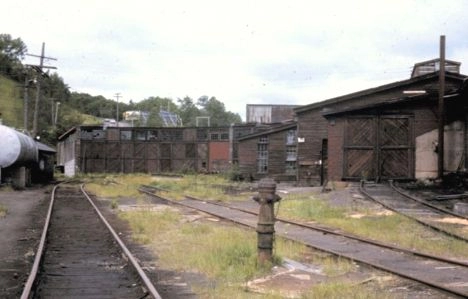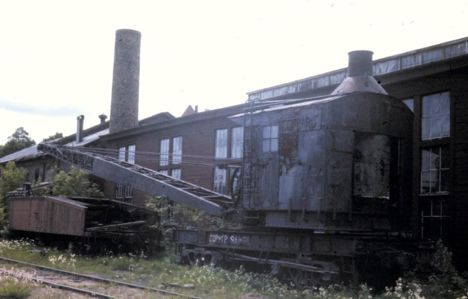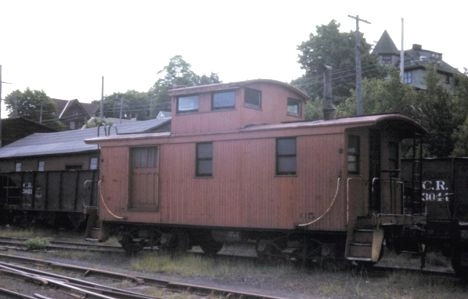- Details
- Hits: 2365
Location: Houghton, MI - Railroad Facilities


 Houghton was served by two railroads. The Mineral Range railroad generally served north from Houghton up the Keweenaw Peninsula towards Calumet. It later became the Duluth, South Shore & Atlantic, and then the Soo Line. The other railroad was the Copper Range railroad, owned by the Copper Range (Mining) Corporation and it ran south from Houghton through the south copper range to a connection with the Milwaukee Road and Mass.
Houghton was served by two railroads. The Mineral Range railroad generally served north from Houghton up the Keweenaw Peninsula towards Calumet. It later became the Duluth, South Shore & Atlantic, and then the Soo Line. The other railroad was the Copper Range railroad, owned by the Copper Range (Mining) Corporation and it ran south from Houghton through the south copper range to a connection with the Milwaukee Road and Mass.
Photo Info: Top, the COPR roundhouse at Houghton in 1972. 2nd photo, a COPR Crane and Idler car at Houghton. 3rd photo a COPR caboose which is a bit unusual because it had a freight or express loading door on the right side. This was likely used with mixed trains which also carried passengers. [All three photos, Charles Geletzke Jr.]
Notes
Time Line
1959. June 10. Fred Clement's present job with the DSS&A railway doesn't require much effort. All he has to do is turn a switch twice a day. Because he has next to top seniority on the Houghton division of the South Shore, Clement, 62, took over the job April 27 when work started on a new lift bridge linking Houghton with the north side of Portage Lake. The Copper Range railroad's approach to the bridge is being removed and the South Shore line has to provide a pilot for a Copper Range train on the South Shore tracks. Since April, Clement has been called from his home in Houghton each morning to turn a switch. He repeats the chore in the afternoon. This will go on until the middle of November when an $11 million bridge replacing an old drawbridge built in 1905 will be completed. [LSJ-1959-0610]
Bibliography
The following sources are utilized in this website. [SOURCE-YEAR-MMDD-PG]:
- [AAB| = All Aboard!, by Willis Dunbar, Eerdmans Publishing, Grand Rapids ©1969.
- [AAN] = Alpena Argus newspaper.
- [AARQJ] = American Association of Railroads Quiz Jr. pamphlet. © 1956
- [AATHA] = Ann Arbor Railroad Technical and Historical Association newsletter "The Double A"
- [AB] = Information provided at Michigan History Conference from Andrew Bailey, Port Huron, MI

